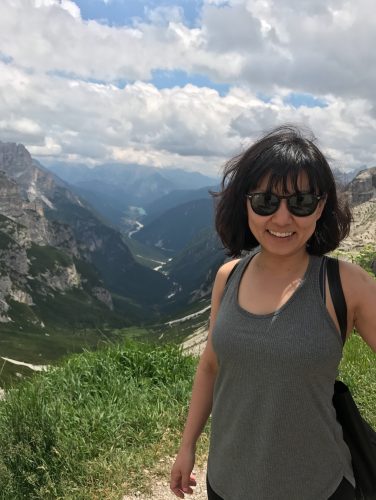- Date: 13 Sep 2019
- Comments: (0)
- Categories: For Everyone, Fun Stuff
Get to Know Gemini is a new series of blog posts aimed to highlight the different careers, backgrounds, and types of people contributing to Gemini Observatory and its science.

Name: Hwihyun Kim
What is your current position and at which telescope?
Assistant Scientist at Gemini South
In four lines or less, explain what you do as part of the Gemini Observatory team?
I help the Gemini users with setting up their programs and checking the progress of the program and the data. I also prepare nightly plans for the different observing conditions.
My instrument support duty is for GMOS-S by monitoring zeropoint magnitudes, acting as a Tier 3 HelpDesk support, and doing the back-on-sky checks when it’s installed.
How long have you worked for Gemini?
It’s been 2 years and 7 months.
What drew you to this job?
I was attracted by the fact that we have two telescopes covering both hemispheres. Both Chile and Hawaii are the best places to be if you are an observational astronomer! I picked Chile cause the astronomy community in Chile has been growing so much recently and I wanted to be part of that.
What is the best part of your job?
Working with people from the different science background. As a contact scientist I enjoy learning new things from what other people are doing with our data.
Where are you originally from/where did you grow up?
Seoul, Korea. I haven’t lived there for last 15 years tho.
What skill do you think is most important to know for your job?
Communication in both written and oral forms.
Why is astronomy important?
I wouldn’t say it is important to everyone. It is always exciting and fun to do. Astronomy is a record-breaking science and it goes along with advances of the technologies applied to/from astronomy. We know much more about our Solar System, exoplanets, stellar evolution and formation in different galaxies, and early universe than ten years ago. With all the extremely large telescopes being built in near future and the space telescopes like James Webb and WFIRST, the new discoveries won’t stop happening. Nobody is dying of not knowing or not wanting to learn about astronomy, but it would be unfortunate missing out all the pleasures that we get from finding out new things about the universe and nature in general.
In three lines, explain your PhD thesis.
I studied young massive stellar populations in nearby star forming galaxies using the HST/WFC3 early release science data. I developed a method to measure the reddening of individual stars using the combinations of observed colors and to estimate their ages and masses from the extinction corrected colors and magnitude. With those information, I could map the spatial distribution of stars in different age groups and learn how and where the stars and star clusters move from their birthplace to the current locations.
What are your current research interests?
I continue working on star formation and evolution of resolved stellar populations in nearby galaxies with the LEGUS data (legus.stsci.edu), specially how to select and identify star clusters using their morphological characteristics. My LEGUS collaborators and I recently started the spectroscopic follow-up of Luminous Blue Variable candidates identified in our nearest samples (NGC 7793 and NGC 1313) using VLT/MUSE and GMOS-S MOS. They provide an important clue about the evolution of massive stars .
What is your favorite movie?
This is a hard question. Little Miss Sunshine. I like the family dynamics in it.
What is the latest book you have read?
Finn Family Moomintroll by Tove Jansson and Kalpa Imperial by Angelica Gorodischer
What is one hobby of yours?
Hiking and Jigsaw puzzle
Favorite beverage?
COFFEE!!
Check back next month to learn more about the staff that help Gemini to explore the Universe and share its wonders!





